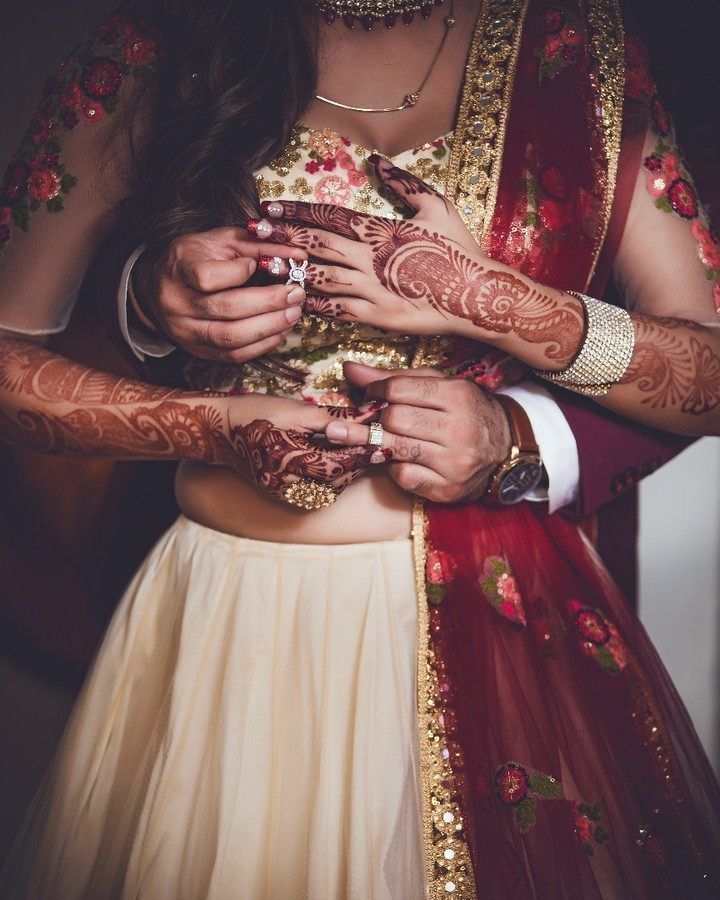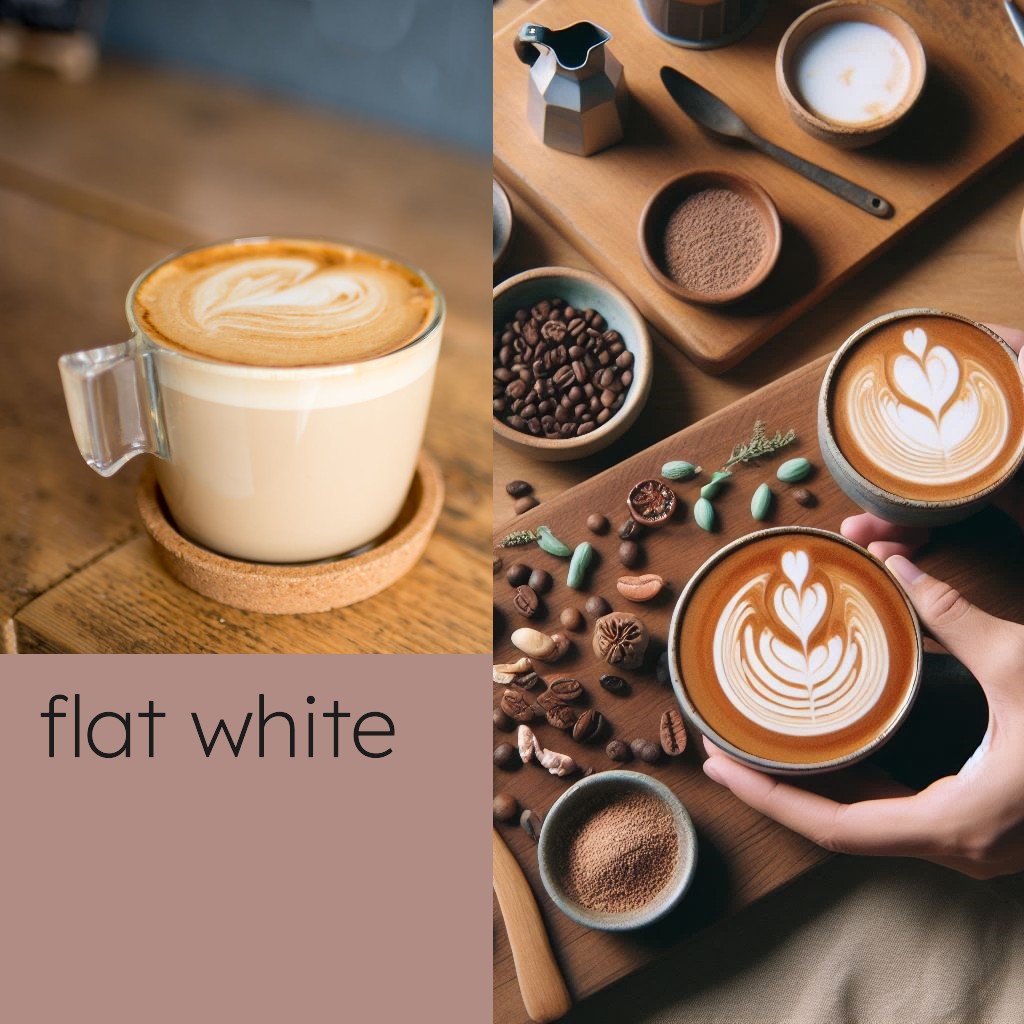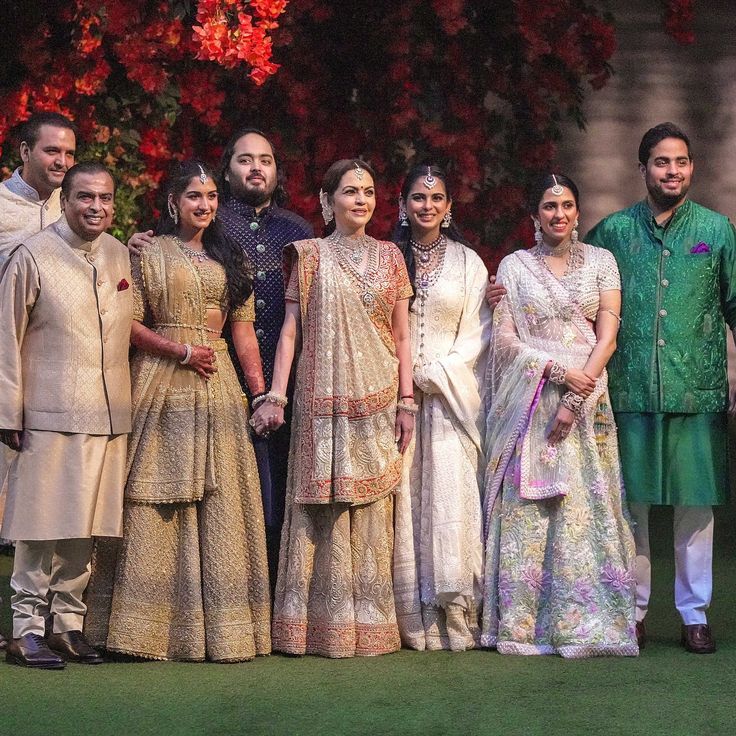2024, interior design trends are shifting towards prioritizing comfort and personal expression
As we step into 2024, interior design trends are shifting towards prioritizing comfort and personal expression, while still incorporating eye-catching elements that spark conversation. Think cozy sanctuaries that reflect your unique personality, with bold accents that add a touch of whimsy and sophistication.
Here are some of the hottest trends to watch out for in the coming year:
1. Global Fusion:
Travel restrictions are easing, and our homes are becoming havens for global inspiration. Expect to see a blend of cultural influences, with furniture, textiles, and artwork from around the world coming together to create a unique and eclectic look. Think Moroccan rugs paired with Scandinavian furniture and Japanese-inspired artwork.
2. Earthy Elegance:
Nature is taking center stage, with organic materials like wood, stone, and woven textures adding warmth and texture to our spaces. Earthy color palettes inspired by the outdoors, such as terracotta, sage green, and warm ochre, will be popular, creating a sense of calm and grounding.
3. Sculptural Curves:
Sharp lines and minimalist aesthetics are giving way to softer, more organic shapes. Curved furniture, arches, and rounded doorways will add a touch of whimsy and femininity to your space. This trend also extends to lighting and decor, with sculptural pieces that make a statement.
4. Playful Patterns:
Wallpaper is making a comeback, but in a bold and playful way. Geometric prints, vibrant florals, and unexpected patterns will add visual interest and personality to your walls. Don’t be afraid to mix and match patterns for a truly unique look.
5. Textural Delights:
Tactile experiences are key in 2024. Layering different textures, such as velvet, boucle, and linen, will create a sense of richness and depth. Don’t forget about throws, pillows, and rugs – they’re perfect for adding pops of texture and color.
6. Sustainable Choices:
Eco-conscious design is more than just a trend; it’s a way of life. Consumers are increasingly looking for sustainable furniture and decor made from recycled materials or with responsible manufacturing practices. Vintage pieces and upcycled furniture are also making a big comeback, adding a touch of history and character to your space.
7. Wellness Retreats:
Our homes are becoming sanctuaries for well-being. Expect to see an emphasis on creating spaces that promote relaxation and mindfulness. This could include incorporating natural light, adding plants, creating cozy reading nooks, or installing water features.
Remember, these trends are just a starting point. The most important thing is to create a space that reflects your own unique style and personality. Don’t be afraid to experiment and have fun!
Bonus Trend: Local Touches
While global influences are hot, there’s also a growing appreciation for incorporating local elements into your design. This could mean using locally sourced materials, supporting artisans from your community, or drawing inspiration from the architecture and style of your region. Weaving in these local touches can create a truly personal and meaningful space.
No matter where you live in the world, these trends offer a glimpse into the exciting world of interior design in 2024. So get ready to embrace cozy comfort, bold accents, and a touch of global flair as you create your own personal haven.
Color Palette Evolution: 2024 and Beyond

Dominant Colors for 2024:
- Earthy Neutrals: Warm beiges, taupes, and terracotta tones reflecting a desire for groundedness and comfort. Think burnt orange, ochre, and clay hues.
- Uplifting Brights: Pops of vibrant and joyful colors like emerald green, cerulean blue, and fuchsia to counteract pandemic fatigue and add optimism.
- Serene Blues: Palettes featuring calming azure, sky blue, and lavender shades, inspired by the natural world and a quest for tranquility.
Accent Color Trends:
- Metallic Accents: Gold, silver, and bronze accents adding a touch of luxury and elegance, particularly in home decor and fashion.
- Greenery Accents: Pops of sage green, olive, and fern adding a touch of nature and organic feel to any palette.
- Unexpected Contrasts: Bold contrasting accents like mustard yellow or hot pink against muted or dark backgrounds for a playful and impactful effect.
Influence of Pantone’s Color of the Year:
The 2024 Pantone Color of the Year, “Viva Magenta,” has undoubtedly influenced color trends. This vibrant and energizing pink-purple shade symbolizes resilience, optimism, and joyful expression. We see its influence in fashion, design, and lifestyle choices, often paired with contrasting neutrals or complementary blues and greens.
Looking Beyond 2024:
It’s important to remember that trends are not static. While these colors and themes are prominent in 2024, new influences and innovations will emerge in the coming years. Here are some potential trends to watch for:
- Tech-Inspired Palettes: Neon-like brights and holographic accents influenced by gaming and virtual reality aesthetics.
- Sustainable Colors: Increased focus on natural dyes, recycled materials, and eco-friendly color choices.
- Global Fusion: Inspiration drawn from diverse cultures and traditional color palettes, leading to richer and more vibrant combinations.
Remember, the best color palette is the one that speaks to you and your individual style. Don’t be afraid to experiment and combine different trends to create something unique and personal.
Sustainable Interior Design: Building a Greener Future
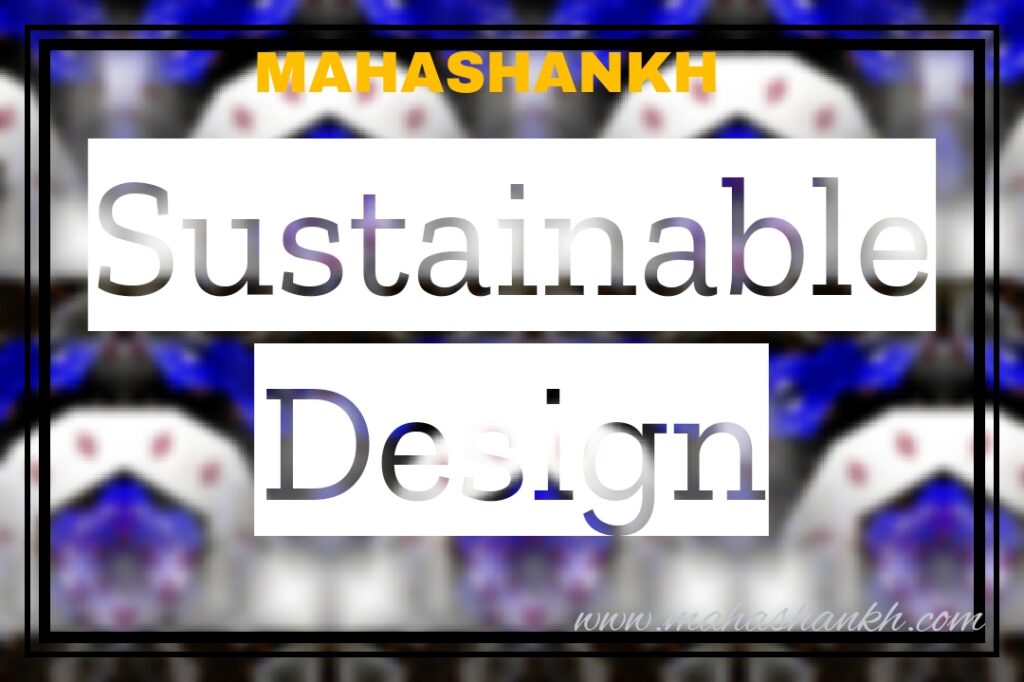
Sustainability is no longer a buzzword, but a crucial aspect of design, especially in interior spaces where we spend considerable time. Here’s a dive into eco-friendly practices you can incorporate:
Eco-friendly Materials:
- Natural Materials: Opt for bamboo, cork, hemp, reclaimed wood, and recycled textiles. These are renewable, biodegradable, and often require less processing, reducing environmental impact.
- Locally Sourced Materials: Minimize transportation emissions by choosing materials produced close to your location. Supporting local artisans also empowers communities.
- Recycled and Upcycled Materials: Give salvaged materials a new life! Use vintage furniture, repurpose old bottles as vases, or create art from discarded textiles.
Energy-Efficient Lighting and Appliances:
- LED Lighting: Switch to LED bulbs for up to 80% energy savings and significantly longer lifespans.
- Natural Light: Design spaces to maximize natural light with large windows and skylights. This reduces reliance on artificial lighting and creates a brighter, healthier environment.
- Smart Technology: Invest in smart thermostats, power strips, and appliances that automatically adjust energy usage based on occupancy and schedule.
Green Building Practices:
- Passive Design: Utilize passive solar heating and cooling strategies to minimize dependence on HVAC systems. Consider cross-ventilation for natural air circulation.
- Water Conservation: Install low-flow faucets and showerheads, use greywater recycling systems, and choose water-efficient landscaping.
- Non-toxic Materials: Avoid materials with harmful chemicals like volatile organic compounds (VOCs) for better indoor air quality and occupant health.
Bonus Tips:
- Invest in Energy Audits: Identify areas for improvement in your home’s energy efficiency through professional audits.
- Support Sustainable Brands: Choose brands committed to responsible manufacturing and ethical sourcing.
- DIY and Repurpose: Embrace creativity! Try DIY furniture projects from sustainable materials or give old items a new purpose.
By incorporating these sustainable design principles, you can create beautiful and comfortable spaces that minimize your environmental footprint and contribute to a healthier planet. Remember, even small changes can make a big difference!
Please feel free to ask if you have any specific questions about implementing these practices in your home or design project.
Tech Integration: Transforming Your Home with Technology

Tech is no longer just an add-on to our homes; it’s becoming an integral part of the design fabric. Let’s explore how to seamlessly integrate high-tech elements into your living space:
Smart Home Technology:
- Automated Lighting: Control lights remotely or set them to adjust automatically based on time of day, mood, or occupancy.
- Temperature Control: Smart thermostats learn your preferences and optimize heating and cooling for improved comfort and energy efficiency.
- Voice-Activated Assistants: Siri, Alexa, and Google Assistant allow you to control your home with your voice, from adjusting lights to playing music to setting alarms.
- Security Systems: Monitor your home remotely, receive alerts about potential threats, and control alarms or locks for enhanced security.
IoT Devices for a Connected Home:
- Smart Appliances: From refrigerators that reorder groceries to ovens that preheat remotely, smart appliances simplify daily tasks and enhance convenience.
- Water Leak Sensors: Prevent costly damage with sensors that detect leaks and automatically shut off water valves.
- Air Quality Monitors: Monitor air quality and adjust ventilation or filtration systems to create a healthier environment.
- Smart Speakers and Entertainment Systems: Immerse yourself in high-quality music and movies with connected speakers and sound systems.
High-Tech Furniture and Accessories:
- Charging Furniture: Integrate wireless charging into tables, nightstands, or even lamps for effortless device charging.
- Interactive Mirrors: Mirrors can display weather updates, news feeds, or personalized messages, adding functionality and a futuristic touch.
- Projecting Artworks: Transform walls into dynamic canvases with projectors that display artworks, photographs, or even personalized messages.
- Smart Kitchen Appliances: Coffee makers that brew your perfect cup on command, refrigerators with built-in touchscreens, and smart ovens that cook for you are just a few examples of the culinary tech revolution.
Remember:
- Prioritize seamless integration: Choose technology that complements your existing design aesthetic and doesn’t look like an afterthought.
- Focus on functionality: Don’t get caught up in gimmicks. Choose tech that solves specific problems or enhances your lifestyle.
- Security and privacy: Be mindful of data security and privacy when integrating smart devices into your home.
Tech integration can elevate your home into a functional, convenient, and even magical space. With careful planning and a focus on your needs, you can create a truly connected and comfortable living environment.
Biophilic Interior Design: Bring the Outdoors In for a Well-being Boost

Biophilic design, the practice of incorporating elements of nature into the built environment, is more than just a trend; it’s a growing movement based on a fundamental human need to connect with the natural world.
Nature Comes Inside:
Benefits of Biophilic Interior Design:
Biophilic design offers a multitude of benefits that go beyond aesthetics:
- Reduced stress and anxiety: Studies have shown that exposure to natural elements can lower stress hormones and promote relaxation. Imagine a serene living room with a cascading water feature or a cozy bedroom with calming forest wallpaper.
- Improved cognitive function: Research suggests that biophilic elements can enhance focus, creativity, and problem-solving abilities. Picture a well-lit home office with a vibrant living wall or a study nook nestled amidst greenery.
- Enhanced productivity: Studies have found that employees in biophilic offices report increased productivity and engagement. Consider incorporating natural elements into your workspace, like strategically placed plants or views of nature.
- Boosted well-being: Biophilic design can contribute to a sense of overall well-being, encouraging physical and mental health. Think of taking a relaxing bath in a bathroom adorned with natural stone and spa-like greenery.
Indoor Plants: Nature’s Little Helpers:
Indoor plants are a fantastic way to introduce biophilic elements into any space. They contribute to a healthier environment by:
- Purifying the air: Plants remove toxins and pollutants from the air, creating a cleaner and healthier atmosphere.
- Boosting humidity: Certain plants add moisture to the air, making it more comfortable and beneficial for your skin and respiratory system.
- Reducing noise: Plants can absorb sound waves, dampening background noise and creating a more peaceful ambiance.
- Adding visual interest: From cascading vines to sculptural succulents, plants provide pops of color and texture, enhancing the visual appeal of any space.
Biophilic Design for Everyone:
Whether you live in a sprawling apartment or a cozy cottage, there are countless ways to incorporate biophilic design:
- Natural light: Maximize natural light with large windows, skylights, or light tubes.
- Natural materials: Use wood, stone, bamboo, and other natural materials for flooring, furniture, and accents.
- Natural textures: Incorporate textures like rough-hewn wood, smooth pebbles, or flowing water features.
- Natural colors: Opt for earthy tones, greens, blues, and soft whites to create a calming and natural atmosphere.
- Water features: From small fountains to cascading waterfalls, water elements add a soothing and dynamic touch.
- Living walls and vertical gardens: Utilize vertical space for greenery, creating a living wall or a lush indoor garden.
- Animal motifs: Bring in natural patterns and textures through animal prints, artwork, or decorative objects.
Remember, biophilic design is about creating a connection with nature that feels authentic to you. So experiment, have fun, and let your creativity flow!
With a little effort, you can transform your home into a haven of well-being, inspired by the beauty and tranquility of the natural world.
Multifunctional Spaces: Making the Most of Your Tiny Empire

Living in small spaces doesn’t have to mean sacrificing comfort or style. The key lies in embracing multifunctional spaces and embracing furniture that plays a starring role in this transformation. Let’s delve into the world of adaptability and versatility:
Adaptable Furniture Champs:
- Foldable and Convertible Furniture: From nesting tables that expand for dinners to sofas that magically morph into beds, these space-saving heroes are masters of disguise. Think Murphy beds that disappear into walls, ottomans that become coffee tables, and dining tables that shrink for solo nights.
- Modular Designs: Think building blocks for grown-ups! Modular furniture allows you to mix and match pieces to create configurations that suit your needs. Add a shelving unit to your desk for storage, or rearrange modular sofas to create cozy corners or open up the space.
- Multi-purpose Furniture: One piece, endless possibilities! Ottomans with storage compartments, benches that double as dining tables, or beds with built-in desks – these multitaskers keep clutter at bay and maximize functionality.
The Rise of the Flexible:
- Sliding Walls and Screens: Divide and conquer! Sliding walls or screens allow you to transform a single room into separate spaces for work, sleep, or relaxation.
- Pop-Up Desks and Workstations: Need a dedicated workspace but limited floor space? Hidden desks in cabinets, fold-down counters, or even transformable furniture legs can create instant work nooks.
- Vertical Thinking: Utilize every inch of your walls! Wall-mounted shelves, cabinets, and even fold-down beds maximize vertical space and keep the floor clear.
Conquering Limited Square Footage:
- Declutter and Organize: The less clutter, the more spacious your space will feel. Invest in smart storage solutions and purge things you don’t use regularly.
- Strategic Zoning: Designate specific areas for different activities to avoid visual clutter and create a sense of order. Define a cozy reading nook, a dedicated sleep zone, and a functional workspace.
- Mirrors and Light: Mirrors reflect light and create an illusion of spaciousness. Strategically placed mirrors and good lighting can make your small space feel bigger and brighter.
Remember:
- Prioritize your needs: Choose furniture and layouts that cater to your lifestyle and how you use your space.
- Invest in quality pieces: Opt for durable and well-designed furniture that will withstand frequent transformation.
- Keep it personal: Don’t be afraid to let your personality shine through! Embrace pops of color, interesting textures, and personalized touches to make your multifunctional space feel like your own.
By embracing multifunctional spaces and adaptable furniture, you can transform your small home into a dynamic and versatile haven that maximizes comfort, functionality, and style. So get creative, embrace flexibility, and conquer your limited square footage with grace and ingenuity!
Cultural Fusion: A Vibrant Journey Around the World in Your Home Interior Design

Cultural fusion is the hottest trend in interior design for 2023 and beyond, celebrating the beauty of blending diverse influences for a uniquely personal and captivating space. Embrace the globetrotter within and embark on a journey through global design influences, cultural patterns, and the art of blending traditions to create an aesthetic that speaks to your soul.
Global Design Influences:
- Japanese Zen: Minimalism meets functionality with clean lines, natural materials like wood and bamboo, and serene touches like tatami mats and shoji screens.
- Moroccan Flair: Rich colors, intricate geometric patterns, and luxurious textures like velvet and brass evoke the vibrant desert vibes of Morocco.
- Scandinavian Simplicity: Embrace hygge with cozy textures, soft lighting, and natural elements like wood and fur for a warm and inviting atmosphere.
- Mid-century Modern: Channel the timeless elegance of the 1950s with clean lines, bold colors, and iconic furniture pieces like Eames chairs and Saarinen tables.
- Bohemian Eclectic: Let your free spirit roam with a mix of patterns, textures, and colors from around the world, creating a playful and personal space.
Cultural Patterns and Motifs:
- Indian Mandalas: Bring in the spiritual and symbolic power of these intricate geometric patterns through textiles, rugs, or wall art.
- Mexican Talavera Tiles: Add a splash of color and vibrancy with hand-painted tiles featuring whimsical floral motifs and geometric patterns.
- African Mudcloth Prints: Celebrate the bold geometric patterns and earthy tones of this traditional West African fabric through pillows, throws, or even upholstery.
- Turkish Ikat Textiles: Introduce a touch of nomadic charm with the colorful and vibrant ikat patterns on rugs, cushions, or wall hangings.
- Japanese Woodblock Prints: Bring in the serenity and elegance of this traditional art form with wall art or decorative accents featuring iconic prints like Hokusai’s “The Great Wave.”
Blending Traditions for a Unique Aesthetic:
- Mix and Match Textures: Combine a Moroccan kilim rug with a Scandinavian wool throw for a cozy and globally inspired living room.
- Play with Colors: Layer an Indian paisley throw over a Danish armchair for a vibrant and unexpected pop of color.
- Fuse Furniture Styles: Pair a sleek mid-century modern coffee table with antique Chinese stools for a touch of eclectic charm.
- Incorporate Cultural Artifacts: Display handcrafted masks from Africa or Japanese porcelain vases for a personalized touch.
- Create a Global Gallery Wall: Combine artwork from different cultures and eras to tell a unique story and reflect your wanderlust.
Remember, cultural fusion is not about replicating specific styles but about creating a space that reflects your own unique story and global inspirations. Don’t be afraid to experiment, have fun, and let your creativity flow!
So, pack your imaginary bags, embark on a cultural odyssey through your home, and bring the vibrant tapestry of the world into your living space. With a little bit of imagination and a touch of daring, you can create a space that is both personal and universally appealing, a true reflection of your own globetrotting spirit.
Artisanal Craftsmanship (interior design) : Where Beauty Meets Skill

In an age of mass production and digital perfection, artisanal craftsmanship stands as a beacon of individuality and enduring quality. It’s about the touch of the human hand, the whisper of tradition, and the unique story woven into every stitch, stroke, and curve. Let’s dive into the world of handcrafted furniture and accessories, explore the value they bring to design, and celebrate the artisans who keep these ancient skills alive.
Handcrafted Furniture:
- Unique Character: Each piece is one-of-a-kind, bearing the distinct marks of the maker’s skill and the natural variations of the materials.
- Timeless Designs: Crafted with traditional techniques and built to last, these pieces transcend trends and become cherished heirlooms.
- Sustainable Materials: Artisans often favor natural, responsibly sourced materials like wood, metal, and leather, making their creations eco-friendly investments.
Handcrafted Accessories:
- Exquisite Details: From delicate embroidery to intricate metalwork, handcrafted accessories add a touch of luxury and refinement to any space.
- Cultural Expressions: These pieces often reflect the traditions and stories of the communities where they are made, adding a global touch to your decor.
- Conversation Starters: Each handcrafted item is a story waiting to be told, sparking conversations and creating a sense of connection with the maker and their craft.
Supporting Local Artisans and Craftsmen:
By choosing handcrafted items, you directly support the livelihoods of skilled artisans and preserve their time-honored traditions. This investment contributes to vibrant local economies and empowers communities to thrive.
The Value of Handmade in Design:
Beyond the beauty and individuality, handcrafted pieces bring a certain soulfulness to design. They connect us to the heritage of the maker, the natural world, and the slow, deliberate process of creation. In a world of fleeting trends and mass-produced goods, they offer a sense of permanence, authenticity, and a story that resonates with the heart.
So, how can you incorporate artisanal craftsmanship into your own design?
- Invest in key pieces: Choose a statement handcrafted dining table, a unique ceramic lamp, or a handwoven rug to add a touch of character to your space.
- Seek out local artisans: Explore craft fairs, visit artist studios, and support your community’s skilled makers.
- Mix and match: Don’t be afraid to blend handcrafted pieces with modern elements for a dynamic and personalized look.
- Appreciate the story: Learn about the artisans behind the pieces you choose, and let their stories enrich your living space.
Artisanal craftsmanship is more than just a design trend; it’s a celebration of human skill, cultural heritage, and the enduring value of beauty made by hand. By embracing it, you not only invest in unique and timeless pieces, but also contribute to a more sustainable and culturally vibrant world.
Minimalism with a Twist: Embracing Personality in a Simplified Space

Minimalism, once synonymous with stark white walls and spare furniture, is evolving. While the core principles of clean lines, decluttering, and prioritising function remain, a new wave embraces playful accents, bold pops of color, and personalized touches. Let’s explore how to add personality to your minimal space while maintaining its essence of tranquility and order.
Evolving Trends in Minimalistic Design:
- Earthy Neutrals: Move beyond sterile white and embrace warmer beiges, taupes, and terracotta hues. These natural tones exude a sense of groundedness and add visual interest without losing the minimalist spirit.
- Textured Touches: Introduce tactile elements like woven rugs, plush throws, and natural wood furniture to create a layered and inviting atmosphere.
- Curated Accents: Instead of overwhelming clutter, choose a few statement pieces that reflect your personality. An eye-catching sculpture, a vibrant painting, or a unique ceramic vase can add a personalized touch without compromising the minimalism aesthetic.
- Pops of Color: Don’t shy away from color! A single bold accent wall, a vibrant throw pillow, or a colorful planter can inject personality and liven up the space.
- Functional Minimalism: Embrace furniture and decor that serves multiple purposes. A nesting coffee table, a storage ottoman, or a convertible sofa bed maximizes space and enhances functionality.
Remember:
- Less is more, but one is enough: Choose one bold statement piece or accent color to avoid visual overload.
- Quality over quantity: Invest in well-crafted pieces that will stand the test of time.
- Let function guide you: Every addition should serve a purpose, be it aesthetic or practical.
- Personalize your space: Don’t be afraid to express your unique personality through curated accents and artwork.
Minimalism with a twist is all about creating a space that is both calming and captivating, functional and expressive. By embracing these evolving trends and infusing your own personality, you can transform your minimalist haven into a truly personal and inspiring sanctuary.
Bold Patterns and Textures: Unleash Your Inner Interior Design Daredevil

Step aside, beige walls and predictable stripes! It’s time to embrace the audacious side of interior design with bold patterns and textures. Imagine walls adorned with vibrant botanical prints, furniture upholstered in saturated velvets, and tactile layers that invite you to reach out and touch. Let’s dive into this world of sensory delight and explore how to incorporate these daring elements without creating a visual cacophony.
Statement Wallpapers:
- Go Big on One Wall: Transform a single wall into a focal point with a dramatic wallpaper featuring oversized florals, geometric shapes, or even trompe l’oeil effects.
- Choose the Right Pattern: Select a pattern that complements your existing decor and overall color palette. For a modern look, opt for graphic geometric prints. For a touch of whimsy, try botanical or animal motifs.
- Balance with Neutrals: Keep the rest of the room relatively muted with plain furniture and accessories to avoid visual overload.
Bold Prints:
- Make a Statement with Textiles: Throw pillows, upholstery, and rugs are excellent canvases for unleashing your love for bold prints. Experiment with animal prints, abstract patterns, or even vintage florals.
- Play with Scale: Combine patterns of different sizes for a dynamic look. For example, pair a large-scale floral print on curtains with a smaller geometric pattern on throw pillows.
- Don’t Forget the Floors: Rugs are not just for warmth! Choose a rug with a bold pattern to ground your space and add a touch of color and personality.
Mixing Textures:
- Layer It Up: Combine rough and smooth, soft and hard to create a tactile experience. Layer a woven throw over a sleek leather sofa, or add a nubby knit blanket to a velvet armchair.
- Embrace Natural Materials: Wood, stone, and woven textiles add warmth and organic appeal to your space.
- Play with Light and Shadow: Different textures reflect light differently, creating visual interest and depth.
Layering Patterns Without Overwhelming:
- Start with a Neutral Base: Opt for a neutral-colored wall paint or furniture to provide a calming backdrop for your bolder elements.
- Stick to a Cohesive Color Palette: Choose patterns that share some of the same colors to create a sense of harmony.
- Use the Rule of Three: Limit yourself to three different patterns in a single space to avoid visual chaos.
- Balance Large and Small: Mix patterns of different sizes to create a sense of rhythm and visual interest.
Remember, bold patterns and textures are tools for creative expression. Don’t be afraid to experiment, have fun, and let your personality shine through! By following these tips and trusting your instincts, you can create a space that is both eye-catching and inviting, a true reflection of your unique style.
Dust Off the Past: Vintage and Retro Comebacks are Redefining Interior Design

Move over minimalism, a vibrant wave of nostalgia is crashing onto the shores of interior design. Vintage and retro aesthetics are experiencing a glorious resurgence, offering a warm embrace of the past with a modern twist. From salvaged treasures to reimagined classics, these comebacks are more than just fleeting trends; they’re a conscious shift towards sustainable design, personalized spaces, and a celebration of history and craftsmanship.
Nostalgic Elements Making a Return:
- Mid-Century Modern Marvels: The clean lines, bold colors, and iconic furniture pieces of the 1950s and 60s are back in full force. Think sleek armchairs, statement lamps, and geometric patterns in vibrant hues.
- Grandma’s Chic Charm: Floral prints, chintz fabrics, and antique furniture are shedding their dowdy image and adding a touch of whimsical sweetness to contemporary spaces. Think delicate china displayed on open shelving or a vintage floral sofa as a statement piece.
- Industrial Edge: Exposed brick walls, metal accents, and vintage machinery finds are injecting a touch of raw personality into modern interiors. Imagine an industrial light fixture hanging over a reclaimed wood dining table or a vintage toolbox repurposed as a side table.
Upcycling and Repurposing:
Sustainability is not just a buzzword; it’s a driving force behind the vintage and retro revival. Upcycling and repurposing are being embraced as creative ways to give old objects new life, reducing waste and adding a touch of personal history to your space.
- Transform Found Treasures: Turn an old ladder into a bookshelf, a vintage suitcase into a coffee table, or even a chipped china plate into a quirky wall hanging. Let your imagination run wild!
- Embrace Imperfections: Don’t shy away from wear and tear. The chipped paint on a dresser or the worn leather on an armchair tell a story and add unique character to your space.
- Mix and Match Styles: Don’t be afraid to combine vintage finds with modern pieces. A sleek chrome lamp can accentuate a vintage dresser, or a contemporary rug can ground a mid-century modern sofa.
Modern Twists on Classic Aesthetics:
While nostalgia plays a starring role, these comebacks are not simply carbon copies of the past. Modern designers are infusing classic aesthetics with contemporary sensibilities, creating fresh and exciting interpretations.
- Bold Color Palettes: Gone are the muted tones of the past. Designers are embracing bolder palettes, adding pops of citrus yellow, turquoise, and mustard to vintage-inspired spaces.
- Sustainable Materials: Eco-conscious materials like bamboo, recycled glass, and upcycled textiles are being used to give retro styles a modern makeover.
- Tech Integration: Vintage radios are getting Bluetooth upgrades, and antique lamps are sporting smart bulbs. The result? A seamless blend of old and new that feels both nostalgic and forward-thinking.
The Appeal of Vintage and Retro:
In a world saturated with mass-produced goods, vintage and retro elements offer a welcome antidote. They bring a sense of individuality, character, and story to our spaces. These pieces connect us to the past, sparking memories and conversations. They challenge the throwaway culture and celebrate the enduring value of well-made craftsmanship.
So, embrace the nostalgia wave and let it wash over your interior design choices. Whether it’s a statement piece from your grandmother’s attic or a creatively repurposed flea market find, vintage and retro elements can add a touch of magic, a whisper of history, and a whole lot of personality to your living space. Remember, your home should be a reflection of you, and what better way to express your unique story than with a touch of timeworn charm?
Wellness-Centric Interior Design: Cultivating Harmony in Home and Health

In an era where stress and well-being are at the forefront of our minds, wellness-centric design emerges as a transformative approach to creating spaces that nurture both body and soul. It’s not just about aesthetics; it’s about weaving elements of health and happiness into the very fabric of our homes. Let’s dive into the heart of this design philosophy and explore how to cultivate harmony within your own walls.
Designing for Mental and Physical Well-being:
- Natural Light and Air: Bathe your space in sunshine through ample windows and skylights. Fresh air circulation, aided by plants or ventilation systems, promotes alertness and a sense of vitality.
- Biophilic Design: Embrace nature’s calming influence. Incorporate greenery through indoor plants, natural materials like wood and stone, and water features like fountains or small aquariums.
- Mindful Color Palettes: Soft greens, blues, and earthy tones create a sense of serenity, while pops of warm yellow or orange can inject playful energy. Avoid harsh contrasts and opt for harmonious color transitions.
- Ergonomic & Functional Spaces: Designate areas for specific activities – a well-lit reading nook, a comfortable home office setup, or a dedicated yoga space. Prioritize ergonomic furniture to prevent physical strain.
- Technology with a Purpose: Utilize smart technologies that enhance well-being, like sleep trackers, air purifiers, or apps that promote mindfulness and meditation.
Creating Spaces that Promote Relaxation:
- Dedicated Sanctuary: Carve out a space solely for relaxation and rejuvenation. A cozy reading nook, a meditation corner, or a luxurious bath with dim lighting and aromatherapy candles can work wonders.
- Sensory Delights: Engage your senses. Gentle music, soft throws, fragrant candles, and calming artwork can all contribute to a sense of peace and tranquility.
- Declutter for Clarity: Clutter creates mental strain. Minimize distractions by decluttering surfaces and organizing your belongings. Aim for clean lines and open spaces that evoke a sense of calm.
- Disconnect to Reconnect: Designate screen-free zones, like bedrooms or reading nooks, to encourage digital detox and allow for deeper relaxation and mindful presence.
- Connect with Nature: Views of natural landscapes, balconies, or even small patios can offer a peaceful escape and a dose of stress-reducing greenery.
Integrating Health-Conscious Features into Homes:
- Home Gyms and Movement Spaces: Dedicate a space for physical activity, even if it’s just a yoga mat corner or a small area for bodyweight exercises. Encourage movement and break up sedentary routines.
- Healthy Food Choices: Designing a well-equipped kitchen with smart storage and efficient appliances makes preparing healthy meals easier and more enjoyable.
- Quality Sleep Solutions: Invest in a comfortable mattress, blackout curtains, and a sleep-conducive environment for optimal rest and rejuvenation.
- Clean Air and Water Filtration: Prioritize clean air with air purifiers, ventilation systems, and non-toxic materials. Consider water filtration systems for cleaner drinking water.
- Sustainable Practices: Minimize environmental impact by choosing sustainable materials, practicing eco-friendly cleaning methods, and utilizing natural light and energy-efficient appliances.
Remember:
- Personalize your approach: What works for one person might not work for another. Identify your specific needs and tailor your wellness-centric design around them.
- Start small: You don’t need to overhaul your entire home at once. Begin with small changes, like adding a few plants, decluttering a space, or implementing a mindful morning routine.
- Listen to your body: Pay attention to how your environment makes you feel. Adjust elements if they create stress or discomfort.
- Embrace the journey: Creating a wellness-centric home is an ongoing process. Be patient, experiment, and enjoy the journey of building a space that truly nurtures your mind, body, and soul.
Wellness-centric design isn’t just a trend; it’s a conscious choice to prioritize our well-being within the very space we call home. By incorporating these principles, you can transform your living environment into a haven of peace, health, and happiness, a place where you can truly flourish and reconnect with yourself. So, take a deep breath, listen to your needs, and start cultivating the harmony you deserve in your own well-designed sanctuary.
Customization and Personalization: Where Homes Embrace Your Story

Move over, cookie-cutter interiors! The modern homeowner craves more than conformity. We yearn for spaces that reflect our unique personalities, tastes, and lifestyles. This is where customization and personalization take center stage, transforming houses into homes that whisper our stories in every corner.
Tailoring Interiors to Individual Preferences:
- Custom Furniture and Built-ins: Gone are the days of settling for one-size-fits-all furniture. Bespoke cabinetry, built-in bookshelves, and custom-designed pieces perfectly fit your space and needs, maximizing functionality and style.
- Material and Finish Harmony: From reclaimed wood with a rustic charm to sleek metals and bold colors, choose materials and finishes that resonate with your aesthetic and create a cohesive flow throughout your home.
- Personalized Artwork and Accents: Don’t let your walls tell someone else’s story. Fill them with art that speaks to you, photographs that capture cherished memories, and curated objects that ignite your passions.
- Light and Shadow Play: Tailor the lighting to your mood and activities. Warm pendant lights can create cozy nooks, while strategically placed spotlights can highlight artwork or architectural details.
- Technology Integration: Smart homes aren’t just a futuristic fantasy. Integrate technology seamlessly, from automated temperature control and lighting systems to hidden screens for discreet entertainment.
Custom Furniture and Bespoke Design Solutions:
Invest in pieces that transcend mere function and become integral parts of your story. A handcrafted dining table passed down through generations, a whimsical reading nook built into a window alcove, or an art deco bar designed to evoke classic Hollywood glamour – these custom elements inject personality and create conversation starters.
Personal Touches that Make a House a Home:
It’s the little things that truly personalize your space. A collection of antique teacups displayed on open shelving, a hand-stitched throw draped over a sofa, or a family heirloom displayed on a mantelpiece – these small details act as emotional anchors, weaving your story into the very fabric of your home.
Remember:
- Embrace Imperfections: Don’t strive for sterile perfection. A perfectly curated space can feel cold and impersonal. Allow your home to evolve with you, reflecting your quirks and imperfections.
- Mix and Match Styles: Don’t be afraid to break the rules! Intertwine vintage treasures with modern pieces, juxtapose bold colors with serene neutrals, and create a space that is uniquely yours.
- Prioritize Comfort and Function: Your home should be a sanctuary, not a museum. Design for your comfort and daily routines, ensuring your space caters to your needs and inspires everyday joy.
- Let Your Story Unfold: Your home is a blank canvas for your life. Customize it, personalize it, and let it evolve with you. As you add layers of experience and cherished objects, your space will naturally transform into a haven that truly reflects the essence of who you are.
Customization and personalization are not just design trends; they’re declarations of self. They allow you to break free from the shackles of conformity and create a space that is an extension of your soul. So, go ahead, explore your unique aesthetic, embrace your passions, and let your home become a vibrant tapestry woven with the threads of your story.
Mixing Textures and Materials: A Symphony of Touch and Sight in Your Home

Move over, monotonous interiors! In the world of design, texture reigns supreme, weaving a symphony of touch and sight to create vibrant and dynamic spaces. From fabrics and flooring to walls and decor, the art of mixing materials elevates your home from simply functional to a captivating sensory experience. Let’s dive into the world of textural trends and explore how to craft a tactile and visually stunning haven that reflects your unique style.
Texture Trends:
- Natural Woven Wonders: Embrace the organic warmth of natural materials like rattan, wicker, and jute. Think chunky woven throws, statement baskets, and rustic furniture accents for a touch of earthy charm.
- Plush Velvety Touch: Luxuriate in the decadent indulgence of velvet. Drape a plush throw over a sofa, add velvet cushions to your bed, or even explore statement velvet armchairs for a touch of timeless glamour.
- Metallic Accents: Add a touch of shine and sophistication with metallic elements. Gold accents can bring warmth, while silver creates a cool, contemporary vibe. Think metallic lampshades, decorative bowls, or even textured metallic wallpaper for a statement wall.
- Ceramic Charm: Channel a touch of artisanal flair with ceramic elements. Handcrafted vases, textured tiles, or even sculptural ceramic lamps can add depth and visual interest to your space.
- Rough and Smooth Harmony: Don’t shy away from contrasting textures. Juxtapose the smoothness of leather with the roughness of stone, or combine the softness of linen with the coolness of glass. This interplay of textures creates a dynamic and engaging ambiance.
Mixing Materials for a Dynamic Look:
- Layering Fabrics: Play with different textures in your soft furnishings. Combine chunky knit blankets with smooth silk cushions, or layer a linen throw over a velvet sofa for a cozy and inviting feel.
- Flooring Symphony: Don’t limit texture to just rugs! Explore contrasting materials like wood and stone flooring in different areas of your home. This adds visual interest and defines spaces without resorting to walls.
- Textured Walls: Move beyond paint! Think exposed brick walls, rough concrete finishes, or even decorative wallpapers with raised textures. These add depth and dimension to your walls, turning them into focal points.
- Accessorize with Texture: Don’t underestimate the power of small touches. Play with woven baskets, ceramic vases, or textured artwork to add tactile elements throughout your space.
Creating Tactile and Visually Appealing Spaces:
- Start with a Neutral Base: Opt for a neutral color palette as your foundation. This allows you to layer and mix textures without creating visual overload.
- Balance is Key: Aim for a harmonious balance of textures. Too much roughness can feel harsh, while too much smoothness can seem sterile. Find the sweet spot where textures complement and enhance each other.
- Don’t Fear Contrast: Embrace the power of contrasting textures! Juxtaposing smooth glass with rough wood or soft velvet with cool marble can create a dynamic and visually captivating space.
- Let Your Senses Guide You: Go beyond just the visual! Touch different materials, feel their variations, and let your senses guide you in creating a space that is both pleasing to the eye and delightful to the touch.
Remember: Mixing textures and materials is not just about aesthetics; it’s about creating a sensory experience. Your home should be a place that engages all your senses, a tactile masterpiece that reflects your personality and invites you to explore every corner. So, unleash your creativity, embrace the symphony of textures, and transform your space into a haven that is both beautiful and truly alive.
Open Concept Living Interior Design: Redefining Space and Style in the Modern Home
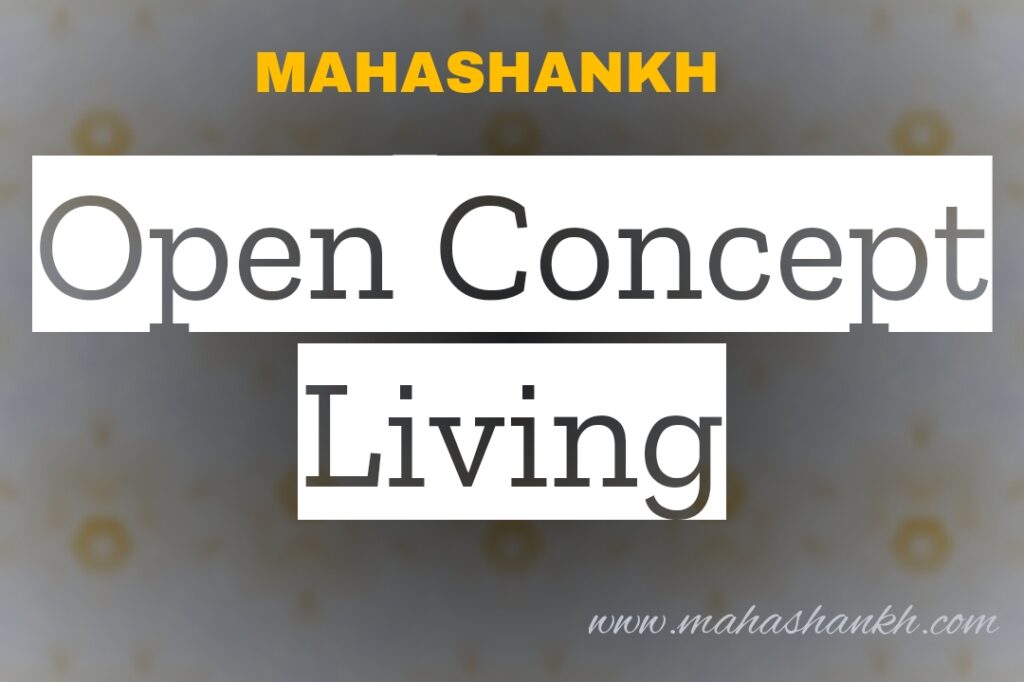
Open floor plans have become synonymous with contemporary living, blurring the lines between kitchen, dining, and living areas to create a sense of spaciousness and flow. But designing an open concept space that’s both functional and beautiful requires careful planning and a keen eye for balance. Let’s dive into the world of open living and explore how to maximize its potential while avoiding common pitfalls.
Benefits of Open Concept Living:
- Enhanced Sense of Space: Open floor plans visually expand your living area, making it feel larger and brighter.
- Improved Social Interaction: Removing walls facilitates easier communication and fosters a sense of connection between people sharing the space.
- Versatility and Adaptability: Openness allows for flexible furniture arrangements and caters to various activities, from family gatherings to intimate dinners.
- Better Natural Light Flow: More open space means more natural light penetration, brightening the entire area and boosting mood.
Designing for Open Concept Success:
- Define Zones: While walls are gone, functional zones are still essential. Use area rugs, furniture placement, and lighting to delineate areas like the kitchen, dining room, and living room.
- Maintain Traffic Flow: Ensure smooth movement through the space by avoiding furniture bottlenecks and creating designated pathways.
- Embrace Multifunctional Furniture: Opt for furniture pieces that serve multiple purposes, like islands with seating or ottomans with storage compartments.
- Control the Noise: Openness can lead to noise concerns. Consider soundproofing options like strategic shelving or rugs to absorb noise.
- Ventilation is Key: Adequate ventilation is crucial in open kitchens. Invest in a powerful range hood and consider open shelving instead of upper cabinets to improve air circulation.
- Style Cohesion: Maintain a cohesive design aesthetic throughout the space. Choose a unifying color palette, furniture styles, and materials to create a sense of harmony.
Open Concept Living Doesn’t have to be for Everyone:
While open floor plans offer numerous advantages, they might not be suitable for every lifestyle. Consider your needs and preferences:
- Privacy Concerns: If you value privacy, an open concept might not be ideal. Consider alternative layouts or incorporate room dividers for specific areas.
- Sound Management: Open spaces can be noisy, especially with children or pets. If noise control is a priority, evaluate your needs carefully.
- Messy Kitchens: Open kitchens can make culinary chaos visible. If you prefer a hidden kitchen, open concept might not be your best match.
The Open Concept Journey:
Creating a successful open concept space is a journey of thoughtful planning and creative execution. Remember:
- Start with your needs and lifestyle.
- Define zones and maintain functional flow.
- Utilize multifunctional furniture and space-saving solutions.
- Address noise and ventilation concerns.
- Maintain a cohesive design aesthetic.
By considering these factors and embracing your unique style, you can transform your open concept space into a vibrant sanctuary that seamlessly integrates function, beauty, and a sense of connection. So, embrace the possibilities, ditch the walls, and open up to a world of design-forward living!
Transitional Interior Design: Where Time Travels, and Style Finds Harmony
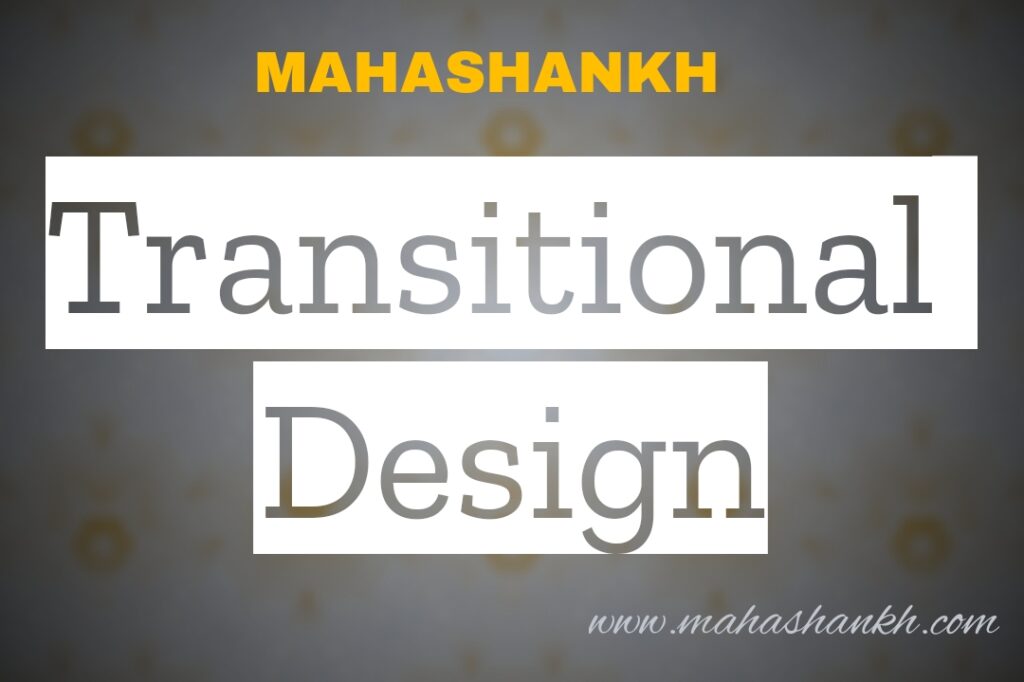
In a world where trends come and go faster than ever, one design aesthetic stands timeless: transitional style. It’s a masterful blend of traditional warmth and modern sleekness, a bridge between heritage and innovation, a symphony where old and new dance in perfect harmony.
Why is Transitional Design so Popular in 2023?
In a time of uncertainty and upheaval, people crave comfort and familiarity. Transitional design fulfills this yearning by embracing classic elements like comfortable furniture, natural materials, and timeless silhouettes, while incorporating modern touches like clean lines, neutral palettes, and pops of contemporary art. It offers the best of both worlds: a sense of grounding rooted in tradition, coupled with the excitement of fresh possibilities.
Balancing Old and New:
Mixing old and new in a transitional space is where the magic happens. Here are some tips:
- Furniture Fusion: Pair a traditional grandfather clock with a sleek modern sofa, or layer a vintage rug over a minimalist coffee table. The contrast creates visual interest and tells a story of timelessness.
- Material Medley: Blend the warmth of wood with the coolness of metal, or soften the starkness of glass with the texture of woven textiles. Play with contrasts in materials to create a layered and dynamic look.
- Color Harmony: Opt for a neutral color palette as your base, like creams, beiges, and taupes. This allows you to add pops of color through traditional accent pieces like antique vases or modern abstract art.
- Lighting Symphony: Combine the elegance of crystal chandeliers with the simplicity of modern pendant lights. Layer warm and cool lighting to create depth and ambiance.
Don’t be Afraid to Experiment:
Transitional design is not about strict rules; it’s about personal expression. Embrace your unique style and mix elements that resonate with you. Here are some additional pointers:
- Personal Touches: Incorporate pieces that have sentimental value, like heirloom paintings or vintage furniture. These add a touch of character and tell your story.
- Embrace Imperfections: Don’t strive for sterile perfection. A slightly worn antique chest or a chipped china plate can add charm and character to your space.
- Function First: While aesthetics are important, don’t forget about functionality. Choose furniture and layout that caters to your everyday needs and lifestyle.
Transitional Design: A Timeless Refuge:
Transitional style is more than just a design trend; it’s a philosophy. It’s about creating a space that feels timeless, elegant, and uniquely yours. By embracing the old and welcoming the new, you can craft a haven that exudes a sense of comfort, warmth, and sophistication. So, open your doors to the possibilities, let your creativity flow, and welcome the timeless harmony of transitional design into your home.
Remember, your home is a reflection of you. Make it a space that celebrates your story, whispers your personality, and embraces the beautiful dance between tradition and modernity. Transitional design is your canvas, so paint it with the colors of your soul and create a masterpiece that truly stands the test of time.
Stepping into the Future: Transforming Interior Design with VR and AR
Move over, mood boards and floor plans! The world of interior design is stepping into the virtual realm, fueled by revolutionary tools like virtual reality (VR) and augmented reality (AR). These technologies are no longer futuristic fantasies; they’re transforming the way we design, experience, and interact with spaces.
Virtual Design: Immersing Yourself in the Future
VR headsets whisk you away to a hyper-realistic world where you can walk through your dream home before it’s even built. Imagine testing furniture arrangements, adjusting paint colors, and feeling the flow of the space all within a digital environment. VR allows you to experiment freely, without the limitations of time, budget, or even gravity!
Augmented Reality: Blending the Real and Virtual
AR, on the other hand, superimposes virtual elements onto your real-world surroundings. Want to see how that statement art piece would look on your living room wall? Hold up your phone, and there it is! AR apps let you visualize furniture, lighting, and even entire room makeovers right in your existing space. It’s like having a magic mirror that reflects your design dreams in real-time.
Beyond Visualization: Revolutionizing the Design Process
These digital tools go beyond just pretty visuals. They offer tangible benefits for both designers and clients:
- Enhanced Communication: VR and AR bridge the gap between designer and client by providing a shared, interactive experience. Clients can actively participate in the design process, leading to fewer revisions and a more satisfying outcome.
- Streamlined Decision-Making: Visualizing different options in real-time helps clients make confident decisions about furniture, materials, and layouts. No more living with buyer’s remorse after construction is complete!
- Improved Efficiency: Design professionals can use VR and AR for space planning, furniture selection, and even client presentations. This saves time, reduces errors, and allows for greater flexibility.
The Future is Now: Embracing Digital Design Tools
While these technologies are still evolving, their impact is undeniable. VR and AR are not just cool gadgets; they’re valuable tools that are democratizing design, making it more accessible and collaborative. Whether you’re a seasoned designer or a first-time homeowner, these digital aids can empower you to create the home of your dreams.
Remember:
- Technology is a tool, not a replacement: VR and AR can enhance the design process, but they shouldn’t replace human creativity and expertise.
- Embrace the learning curve: These technologies are constantly evolving. Be open to exploring new tools and staying updated on the latest advancements.
- Personalize your approach: VR and AR offer a wide range of possibilities. Use them to explore your unique style and create a space that truly reflects your personality.
So, step into the virtual world and unleash your design potential. With VR and AR as your guide, you can create spaces that are not just functional, but truly exceptional, a testament to the transformative power of technology in the hands of creativity.
The future of interior design is no longer confined to blueprints and paint swatches. It’s unfolding in a virtual dimension, fueled by innovation and brimming with possibilities. Are you ready to step into the digital revolution?
Here are 100 frequently asked questions (FAQs) about interior design, along with their answers:
- Q: What is interior design?
- A: Interior design is the art and science of enhancing the interior of a space to create a more aesthetically pleasing and functional environment.
- Q: Why is interior design important?
- A: Interior design is crucial for optimizing the functionality and visual appeal of a space, reflecting the occupant’s lifestyle, and improving overall well-being.
- Q: How do I choose an interior designer?
- A: Research designers, check portfolios, read reviews, and schedule consultations to find a professional whose style aligns with your vision and needs.
- Q: What’s the difference between interior design and interior decorating?
- A: Interior design involves planning and designing the entire space, while interior decorating focuses on furnishings and aesthetics.
- Q: How can I make a small space feel larger?
- A: Use light colors, maximize natural light, incorporate mirrors, and choose furniture with a smaller footprint.
- Q: What are the current interior design trends?
- A: Trends vary, but some popular ones include biophilic design, sustainable materials, and the use of natural textures.
- Q: How much does interior design cost?
- A: Costs vary based on factors like location, scope, and designer expertise. It can range from a fixed fee to a percentage of the project cost.
- Q: Can I hire an interior designer on a budget?
- A: Yes, many designers offer various service packages, and some even specialize in budget-friendly designs.
- Q: How long does an interior design project usually take?
- A: Timelines depend on the project’s scope and complexity but can range from a few weeks to several months.
- Q: What is the role of color in interior design?
- A: Colors influence mood and perception. Warm tones can create a cozy atmosphere, while cool tones evoke a sense of calm.
- Q: How can I mix patterns and textures effectively?
- A: Stick to a color scheme, vary the scale of patterns, and balance busy patterns with more subtle ones.
- Q: What is sustainable interior design?
- A: Sustainable design focuses on using eco-friendly materials, reducing waste, and creating environmentally conscious spaces.
- Q: Can I design my own interior without hiring a professional?
- A: Yes, with research and planning, you can design your interior. Online tools and resources can also assist.
- Q: How do I create a cohesive design throughout my home?
- A: Use a consistent color palette, repeat patterns and textures, and maintain a balance in furniture styles.
- Q: What is the importance of lighting in interior design?
- A: Lighting affects mood and ambiance. It highlights architectural features and contributes to overall functionality.
- Q: How can I make my home more energy-efficient through design?
- A: Use energy-efficient appliances, maximize natural light, and ensure proper insulation and ventilation.
- Q: What are the key elements of a well-designed kitchen?
- A: Efficient layout, ample storage, quality appliances, and a cohesive color scheme are essential for a well-designed kitchen.
- Q: Can I incorporate personal style into a rented space?
- A: Yes, use removable wallpaper, add personal decor items, and choose furniture that can be easily moved or replaced.
- Q: What is the role of furniture in interior design?
- A: Furniture contributes to the functionality, comfort, and style of a space. It should complement the overall design.
- Q: How do I choose the right paint color for a room?
- A: Consider the room’s purpose, lighting conditions, and existing furnishings. Test paint samples in the space before making a decision.
- Q: What is the significance of creating a focal point in a room?
- A: A focal point anchors the room and draws attention. It can be a fireplace, artwork, or a statement piece of furniture.
- Q: How can I incorporate technology into interior design?
- A: Use smart home devices, integrate hidden outlets, and consider tech-friendly furniture to enhance convenience and functionality.
- Q: Can interior design improve productivity in a home office?
- A: Yes, strategic layout, proper lighting, and ergonomic furniture contribute to a more productive home office.
- Q: What are some budget-friendly ways to update my home’s interior?
- A: Paint walls, rearrange furniture, add accent pieces, and consider DIY projects to refresh your space on a budget.
- Q: How do I create a cohesive color scheme for my home?
- A: Choose a primary color and two accent colors, ensuring they complement each other. Use the 60-30-10 rule for distribution.
- Q: How do I design a child-friendly yet stylish space?
- A: Opt for durable, washable fabrics, incorporate storage for toys, and use a neutral base with pops of color that can be easily updated.
- Q: What is the significance of symmetry in design?
- A: Symmetry creates balance and harmony in a space. It’s a classic design principle used to achieve a pleasing aesthetic.
- Q: Can interior design affect mental well-being?
- A: Yes, a well-designed space with natural light, proper ventilation, and comfortable furnishings can positively impact mental health.
- Q: How can I add personality to a neutral interior?
- A: Use accent colors, incorporate unique decor items, and showcase personal mementos to infuse character into a neutral space.
- Q: What is the importance of a well-designed entryway?
- A: The entryway sets the tone for the entire home. It should be welcoming, organized, and reflective of the overall design aesthetic.
- Q: How do I choose the right rug for a room?
- A: Consider the size of the room, the furniture layout, and the desired level of comfort. Ensure the rug complements the overall design.
- Q: Can I mix different design styles in one space?
- A: Yes, mixing styles can create an eclectic and personalized look. Maintain a cohesive element to tie the different styles together.
- Q: How do I make a statement with lighting fixtures?
- A: Choose fixtures that complement the room’s style and serve as visual focal points. Consider unique shapes or materials.
- Q: What are the key principles of Feng Shui in interior design?
- A: Key principles include harmony, balance, natural elements, and the arrangement of furniture to promote positive energy flow.
- Q: How can I maximize storage in a small space?
- A: Use multi-functional furniture, utilize vertical space, and incorporate hidden storage solutions to optimize space in smaller rooms.
- Q: What is the role of art in interior design?
- A: Art adds personality, visual interest, and a focal point to a space.
- Q: How can I create a calming bedroom retreat?
- A: Choose soothing colors, incorporate soft textures, minimize clutter, and invest in a comfortable mattress and bedding.
- Q: What are some creative ways to display a book collection?
- A: Use built-in shelves, create a reading nook, or stack books in decorative arrangements to showcase your collection.
- Q: How do I choose the right window treatments for a room?
- A: Consider the level of privacy, desired amount of natural light, and the overall style of the room when choosing curtains or blinds.
- Q: How can I design a pet-friendly home?
- A: Choose durable, easy-to-clean materials, create designated pet areas, and incorporate pet-friendly furniture and accessories.
- Q: Can I mix metals in home decor?
- A: Yes, mixing metals can add visual interest. Choose a dominant metal and complement it with smaller accents in a different finish.
- Q: How do I create a cohesive design between open-concept living spaces?
- A: Use a consistent color palette, repeat patterns, and maintain a flow with cohesive furniture and decor.
- Q: What is the impact of window placement on interior design?
- A: Properly placed windows enhance natural light, create focal points, and contribute to the overall ambiance of a space.
- Q: How can I design a timeless interior that won’t go out of style?
- A: Opt for classic furniture pieces, neutral colors, and timeless materials. Avoid overly trendy elements that may quickly become outdated.
- Q: What is the significance of the kitchen work triangle in design?
- A: The work triangle ensures efficient movement between the stove, refrigerator, and sink, optimizing functionality in the kitchen.
- Q: How can I design an outdoor living space?
- A: Define zones for seating, dining, and recreation. Use weather-resistant materials and incorporate greenery for a seamless connection to nature.
- Q: How can I use mirrors to enhance interior design?
- A: Mirrors can visually expand a space, reflect natural light, and serve as decorative elements. Place them strategically for maximum impact.
- Q: What are some budget-friendly ways to update my bathroom?
- A: Update fixtures, repaint cabinets, add new hardware, and consider affordable accessories for a bathroom refresh on a budget.
- Q: How can I design a home office that promotes productivity?
- A: Choose a dedicated space, prioritize natural light, invest in comfortable furniture, and minimize distractions for an efficient home office.
- Q: What is the importance of furniture arrangement in a room?
- A: Proper furniture arrangement creates a functional and aesthetically pleasing layout, considering traffic flow and focal points.
- Q: How do I choose the right wallpaper for a room?
- A: Consider the room’s purpose, lighting, and existing decor. Choose a wallpaper that complements the overall design and style.
- Q: How can I design an eco-friendly home?
- A: Use sustainable materials, energy-efficient appliances, and implement green building practices to create an environmentally conscious home.
- Q: How do I design a cohesive color scheme for an open-concept space?
- A: Use a consistent color palette throughout the space, considering the overall mood and desired ambiance.
- Q: What is the significance of a well-designed dining room?
- A: A well-designed dining room encourages social interaction, accommodates gatherings, and sets the stage for enjoyable meals.
- Q: Can I mix different wood finishes in furniture and decor?
- A: Yes, mixing wood finishes can add depth and interest. Choose a dominant finish and complement it with smaller accents in a different wood tone.
- Q: How do I choose the right flooring for different rooms in my home?
- A: Consider the room’s function, traffic levels, and desired aesthetic when choosing between options like hardwood, tile, or carpet.
- Q: What is the impact of ceiling design on a room?
- A: Unique ceiling designs can add architectural interest, create a sense of height, and contribute to the overall style of a room.
- Q: How can I make my home more accessible and age-friendly?
- A: Use universal design principles, incorporate grab bars, choose slip-resistant flooring, and ensure clear pathways for easy mobility.
- Q: How do I choose the right area rug size for a room?
- A: Ensure the rug is large enough to anchor the seating area and allow for at least the front legs of furniture to be on the rug.
- Q: What are some creative storage solutions for a small home?
- A: Use vertical space with wall-mounted shelves, utilize under-bed storage, and choose furniture with built-in storage compartments.
- Q: How can I design a stylish and functional laundry room?
- A: Maximize storage, incorporate a folding station, and choose durable materials for a laundry room that combines style and functionality.
- Q: How do I choose the right window coverings for different rooms?
- A: Consider privacy needs, light control, and the overall design aesthetic when choosing between curtains, blinds, or shades.
- **Q: What is the importance of outdoor lighting in landscaping design?
source: Google




